The resort history
Peisey-Nancroix and Landry, the two villages that make up Peisey-Vallandry, have existed long before the 20th century and offer a rich, detailed history. The resort’s traditional Savoyard spirit is a proud heir to this heritage. Here are a few glimpses into the past that might inspire you to explore more deeply during your stay.
⛪ Before the 19th Century: Alpine Life, Faith & a Mining Revolution
Though the name Peisey appears earlier in historical records, the official existence of the commune is believed to date back to the very beginning of the 2nd millennium.
For the next seven centuries, life in the valley revolved around three pillars:
- 🌿 Tending the alpine pastures
- ✝️ Devout adherence to Roman Catholic doctrine
- 🛡️ Preserving local traditions against external influences
🏛️ Architectural Heritage That Still Stands Proud
Three historic landmarks continue to embody the soul of the valley and are open to visitors year-round:
- Landry Church – the village’s peaceful guardian
- Peisey Church – steeped in local devotion
- Notre-Dame des Vernettes Chapel – built in the 1720s beside a miraculous spring (yes, you can still collect its water!), nestled in the mountains and accessible in both summer and winter. It’s a true hidden gem worth the detour.
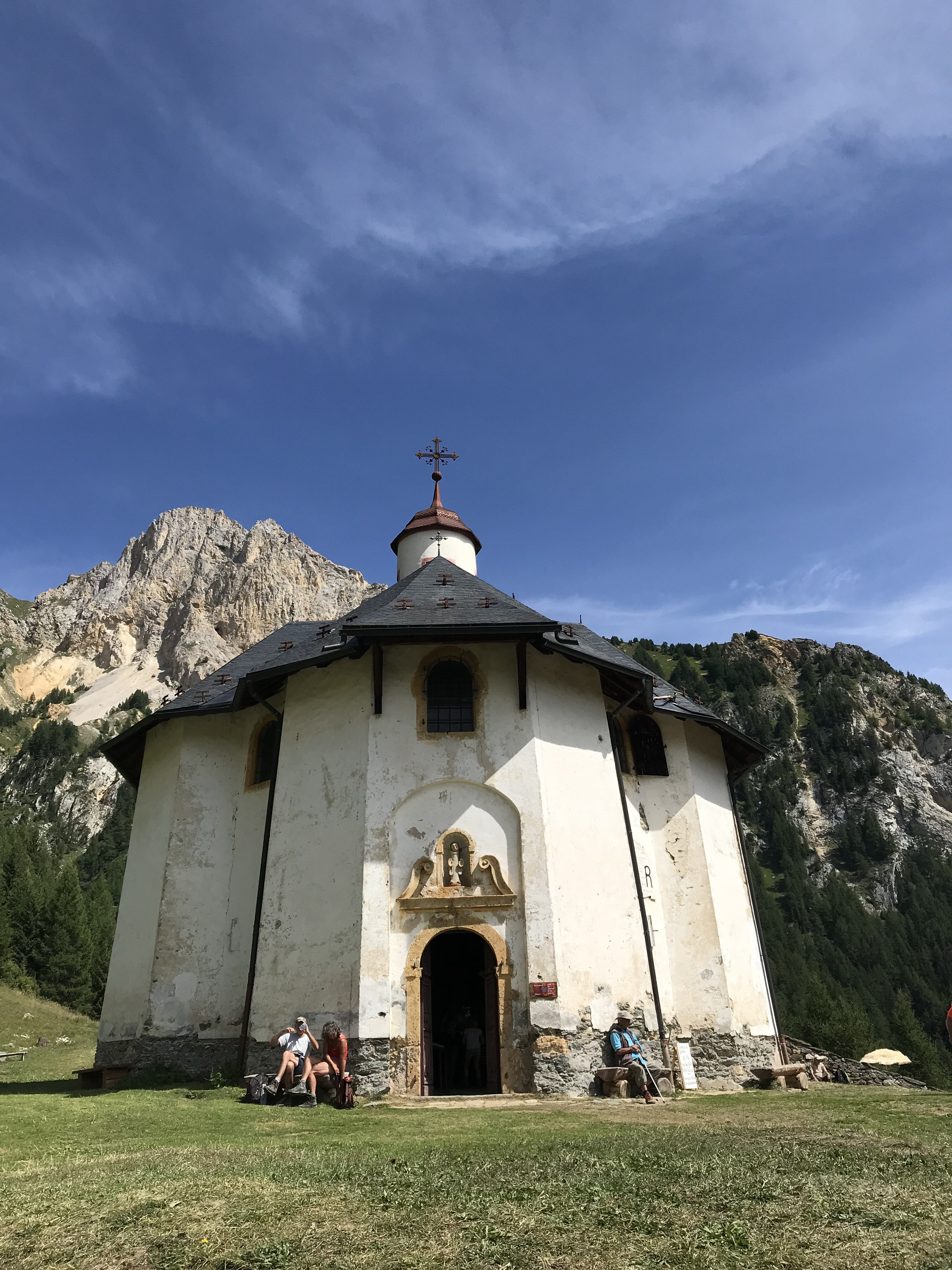
Notre-Dame des Vernettes Chapel
⛏️ The Mining Chapter
In the 17th century, a rich mineral vein was discovered in Peisey. It was first exploited by the English, then by a local company throughout the 18th century. But the arrival of revolutionary forces brought turmoil:
- 🏚️ Religious symbols were attacked
- 🏭 The mine was nationalized
Tension then sparked on with the deeply traditional locals.
⚒️ 19th Century: Mining Glory, Village Growth & Shifting Borders
In 1802, the future Napoleon I chose Peisey as the site for the practical training of students from the prestigious École Nationale Supérieure des Mines de Paris.
🏰 Students and their director were housed in the Palais de la Mine, nestled in the alpine landscape
📚 Theoretical lessons were held in Moûtiers, while hands-on experience took place in Peisey’s rugged terrain
👷♀️👷♂️ At its peak, the mine employed over 300 workers, a bustling hive of activity deep in the mountains
🏔️ Political Shifts & Industrial Challenges
The tides turned in 1815, after the fall of Napoleon’s Empire:
👑 Savoy was returned to the Kingdom of Sardinia, under the House of Savoy
🏫 The mining school was relocated, but the mine remained operational
Initially, the mine thrived. But nature had other plans:
🌊 Frequent flooding made new veins increasingly difficult to exploit
⚠️ Production declined steadily until the mine closed permanently in 1866
🏡 Village Expansion Amidst Decline
Despite the mine’s struggles, the surrounding villages flourished:
👨👩👧👦 Peisey-Nancroix reached a population peak of 1,631 in 1838
🏘️ Landry followed with 879 residents in 1848
🇮🇹 A Final Shift in Sovereignty
In 1860, as a gesture of gratitude for France’s support in Italy’s war of independence against Austria:
🇫🇷 Savoy was officially annexed to the Second French Empire
This time, the transition was peaceful and permanent
With mining no longer viable, the Peiserots turned to new horizons:
🧠 They exported their expertise, especially to Paris, contributing to the capital’s growth
📉 Though the population dropped below 1,000 combined in Landry and Peisey by 1901, the villages continued to evolve and adapt
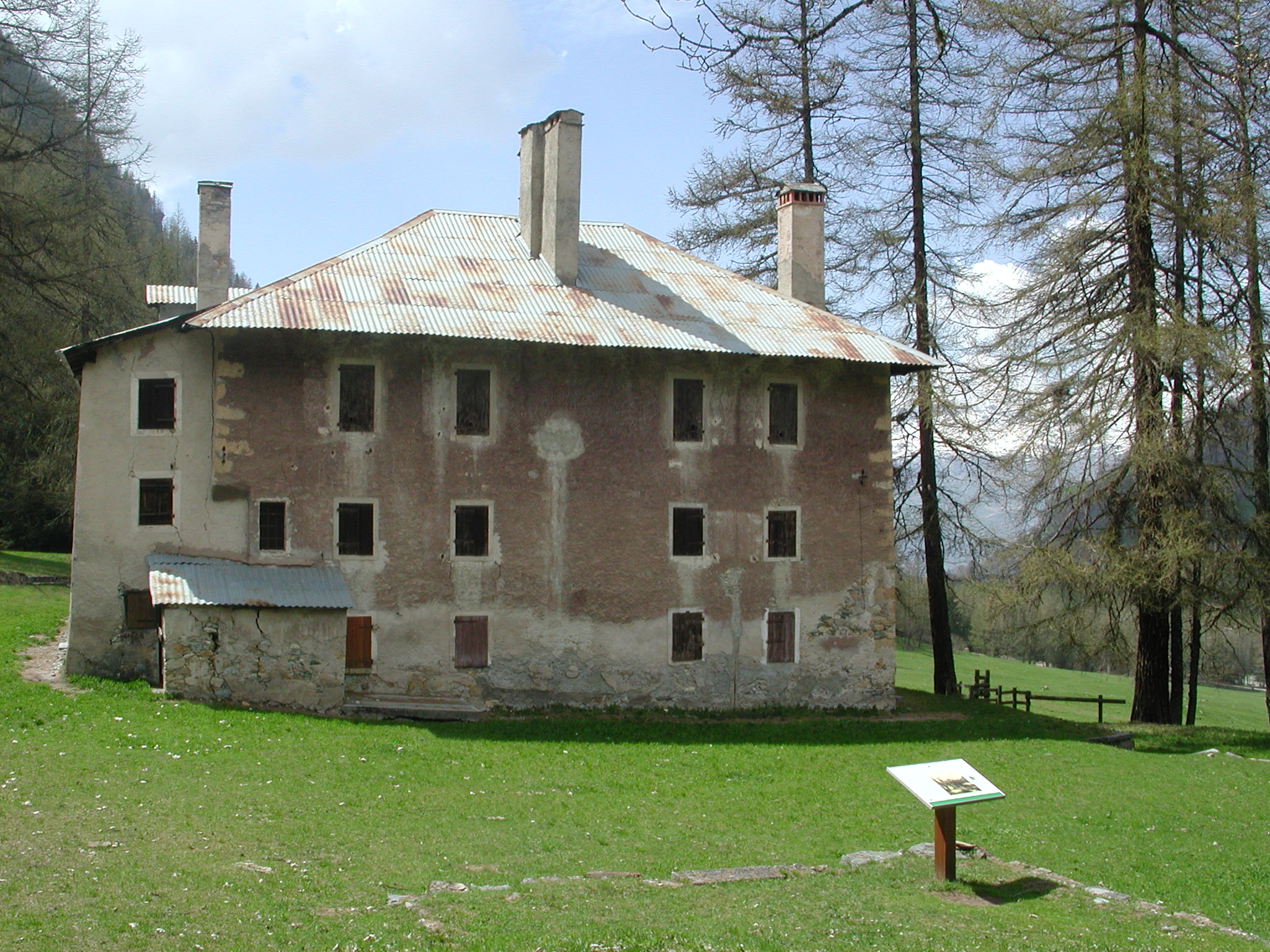
The Palais de la Mine (guided tours are offered during the summer)
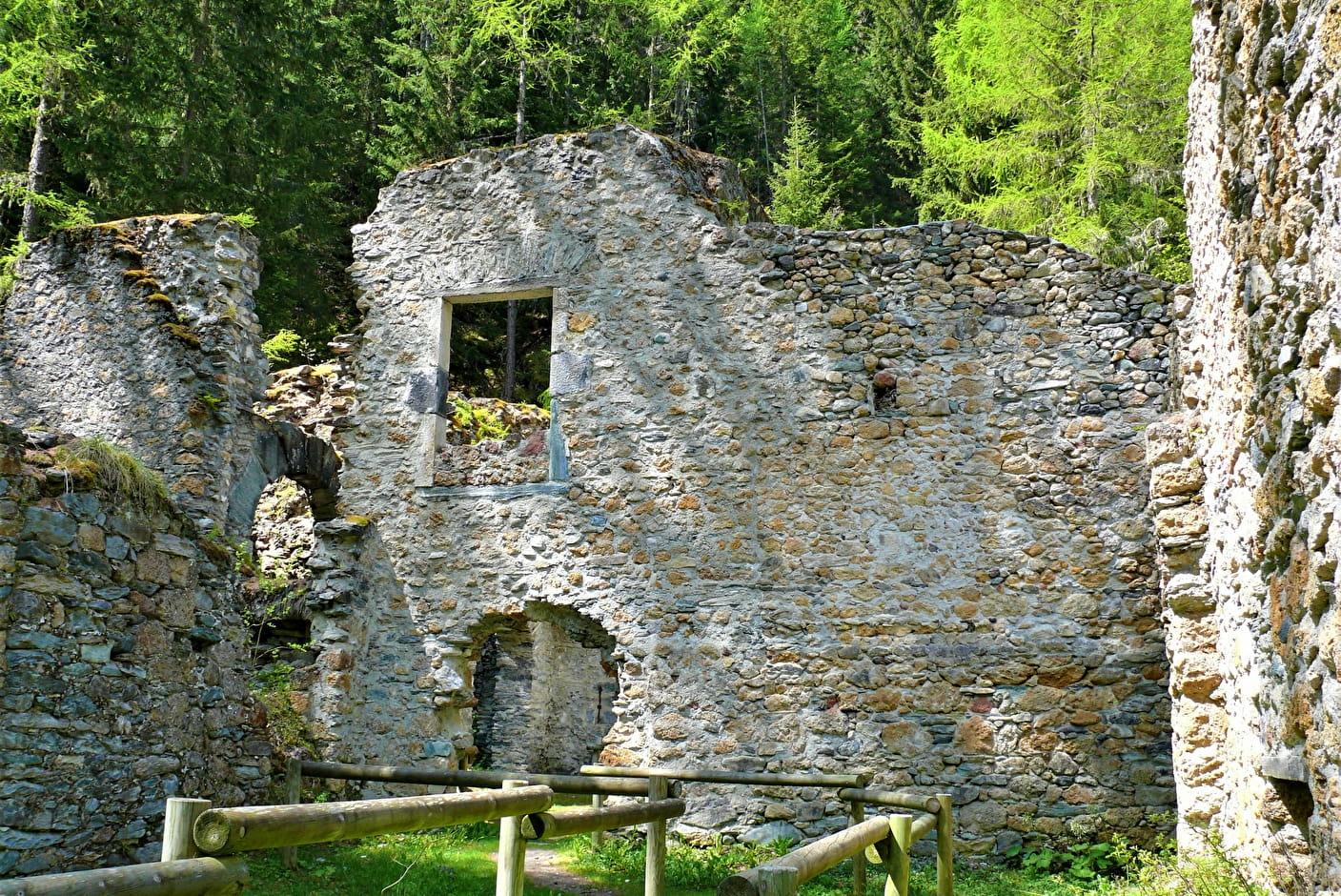
Crumbling remains of the old mining structures
🎿 1900–1960: The Shift Toward Winter Sports
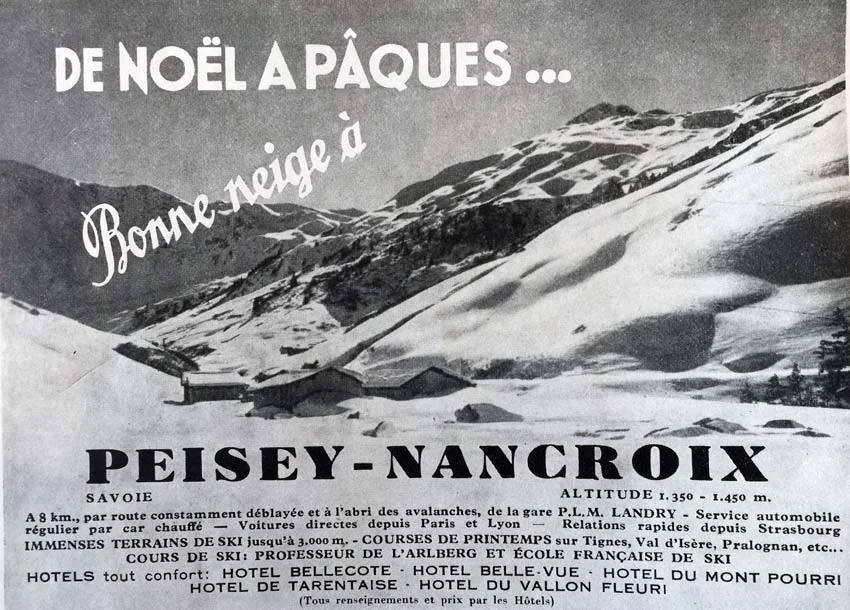
Vintage 1937 Advertisement (with thanks to Peisey-Info for preserving the archives)
The dawn of the 20th century marked the beginning of a new era for the region: tourism.
- In 1910, the first ski club was founded, with cross-country skiing quickly gaining popularity
- Yet it was only after World War I, following the sacrifice of 22 men from Landry and 17 from Peisey who gave their lives for France, that the local economy began to pivot toward the allure of “white gold”: snow
🏨 Infrastructure & Promotion
- Hotels began to spring up
- In 1930, the first ski lift was installed, a modest but revolutionary step toward modern skiing
- Ski lessons were introduced in the 1930s, and the commune started promoting itself as a winter destination
- 🚂 The railway station, connected to Paris via the PLM line, played a key role in attracting visitors from the capital
🌍 War & Resilience
During World War II, the towns were spared major destruction:
Located in the Italian occupation zone, they held no strategic military interest
Still, Landry mourned three more men who never returned from the conflict
🚡 Post-War Revival & Summer Adventures
After the war, the region bounced back:
- The first chairlift was installed, and its departure station remains visible today as a relic of alpine innovation
- 🧗♂️ Meanwhile, summer activities began to emerge, with mountaineering leading the way into a new season of exploration
🏔️ Since 1960: Peisey-Vallandry, A Mountain Resort in Full Ascent
The conquest of altitude began in the early 1960s, as the region embraced a bold new chapter.
- In 1962, the resort of Peisey-Vallandry was officially born, along with the creation of the village Plan-Peisey
- 🚡 Ski lifts began climbing higher and higher, transforming untouched alpine slopes into a thriving winter playground
- This expansion was fueled in part by the French government’s “Plan Neige”, a national initiative to develop ski tourism
🏗️ Growth Fueled by Elevation
From that moment on, the resort grew in a rhythmic cycle:
- New ski lifts led to new buildings
- New buildings justified even more lifts
- By the 1970s, the resort embraced its identity as a family-friendly destination, intentionally limiting bed capacity to preserve its intimate charm
- The ski area gradually extended toward the neighboring resort of Les Arcs, inching closer with each new installation
🤝 A Union & A New Village
In 1985, a pivotal moment arrived:
- The communes of Landry and Peisey officially united
- 🏘️ The first building of the new Vallandry village-resort, the residence “Les Michailles” (it's us!), rose from the ground
- Its inauguration took place during the 1987 winter season, alongside the launch of a brand-new 4-seater detachable chairlift—a marvel of modern engineering at the time
- 🎿 Management of the lift system was entrusted to a private operator under a public service delegation
📈 A Snowfront Renaissance
Over the next 15 years, both Peisey and Vallandry flourished:
- Development surged along the snowfronts of each resort
- 🚠 New lifts were installed across the entire ski domain, responding to growing visitor numbers and evolving tourism trends
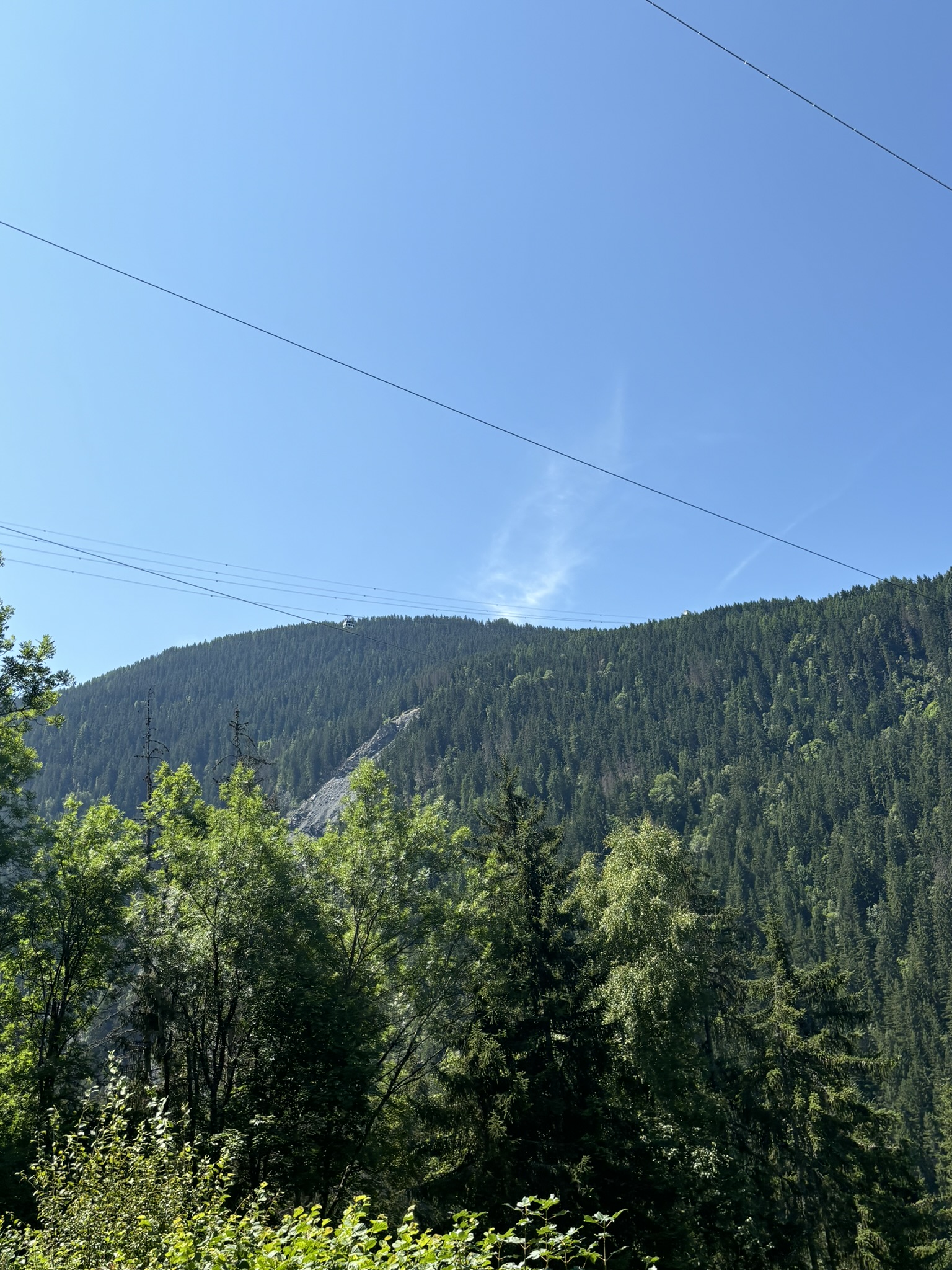
The Vanoise Express as seen from the road between Landry and Peisey
🚠 The 2000s Revolution: Paradiski & the Arrival of Club Med
In 2003, a bold alpine alliance reshaped the future of skiing in the region:
- La Plagne, Les Arcs, and Peisey-Vallandry joined forces to amplify their appeal and create a seamless ski experience
- At the heart of this transformation was a marvel of engineering: a double cable car soaring over 300 meters above the valley floor, connecting Plan-Peisey to Les Coches in under 4 minutes
- Built by the French company Poma, this aerial link united the ski areas and gave birth to Paradiski, one of the largest ski domains in the world
- A shared ski pass was introduced, and the lift systems of Peisey-Vallandry and Les Arcs were officially merged
🏨 A New Era with Club Med
In winter 2006, Club Med arrived, bringing a fresh wave of energy and development:
- The resort experienced a boom, with a focus on building tourist and leisure residences rather than private homes
- 🛏️ Despite the growth, Peisey-Vallandry maintained a modest bed capacity of around 12,000, compared to the 50,000 beds in Les Arcs and 70,000 in La Plagne
👨👩👧👦 Preserving the Family Spirit
Even with its expansion, Peisey-Vallandry held onto its warm, family-friendly atmosphere:
- Local shopkeepers, restaurateurs, and long-time professionals helped preserve the village charm
- 🌙 Unlike its larger neighbors, the resort offers a quieter nightlife, reinforcing its appeal to families and those seeking a more peaceful alpine escape without turning into a mere sleeping place
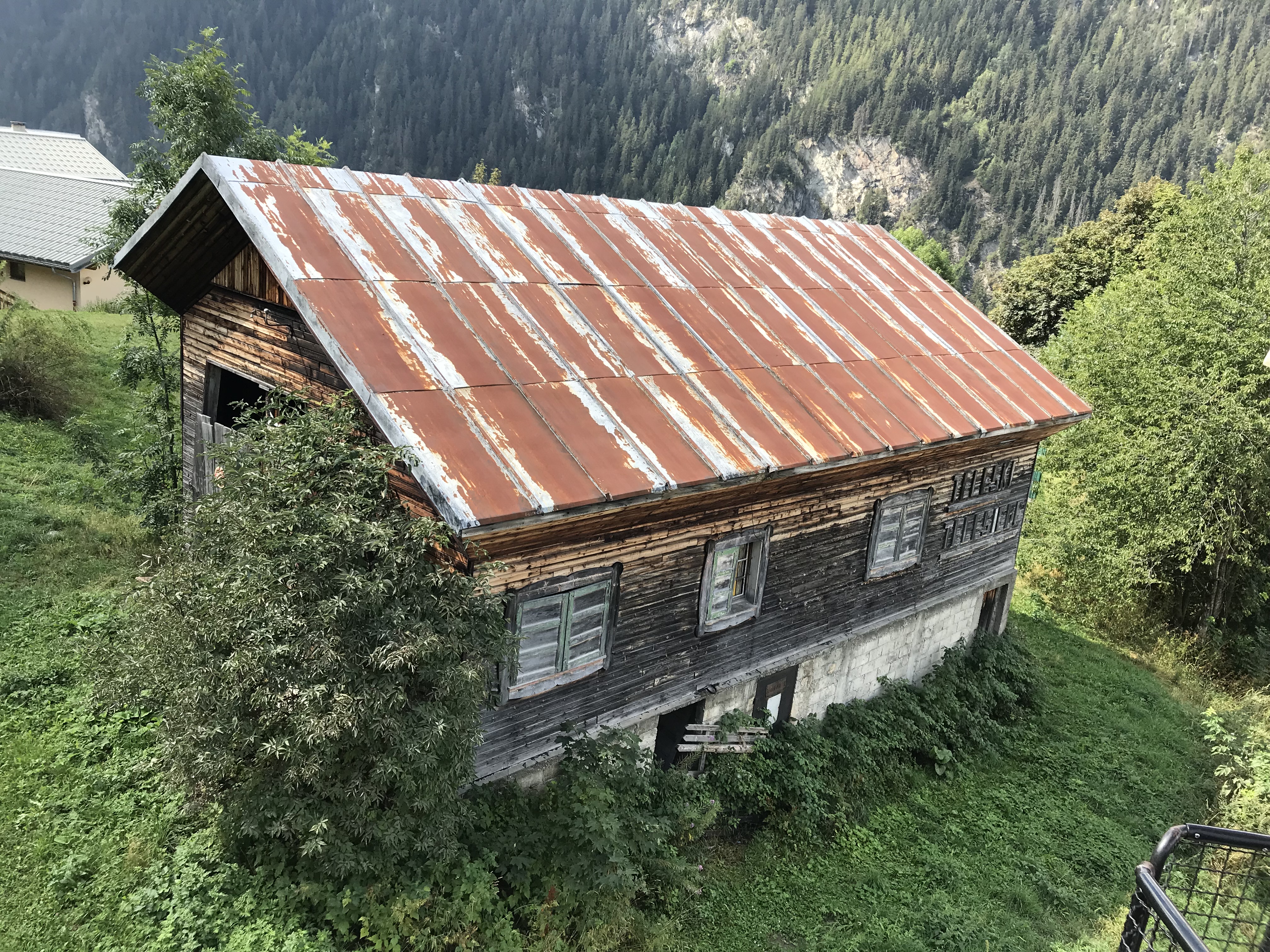
The original departure station of the first chairlift, built in 1948
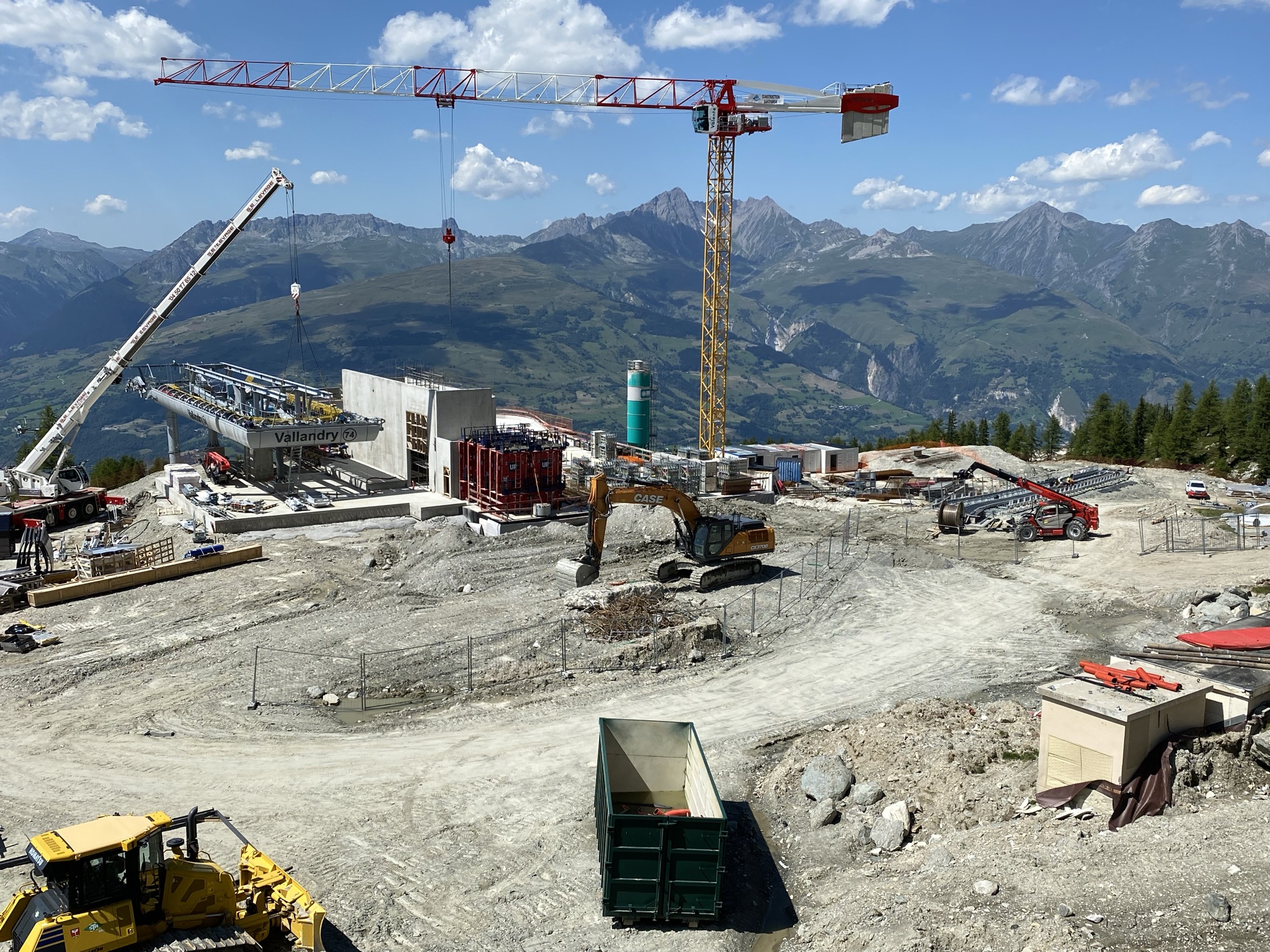
Construction of the Vallandry gondola lift, replacing the 1986 chairlift

Ski trail map from just before Vallandry was established
🌄 For Those Curious to Explore Further
Beyond the museums nestled in the heart of Peisey-Vallandry, a wealth of online resources offers deeper insight into the region’s fascinating history and alpine heritage:
🗂️ Peisey-info — A treasure trove of historical research and archival work. This exceptional site has meticulously gathered and curated decades of local stories, photographs, and documents, painting a vivid portrait of the valley’s evolution. Unfortunately the website has not been translated to English.
🚡 Remontées-mécaniques.net — More than just a technical archive, this site traces the history of ski lifts in the region. Through their development, it reveals the transformation of the resort itself: its slopes, its infrastructure, and the urban planning decisions that shaped the mountain landscape (also in French).
🏔️ The official resort website — A gateway to the living culture and heritage of Peisey-Vallandry. From traditional architecture to local customs, it offers a snapshot of what visitors can discover on-site.

